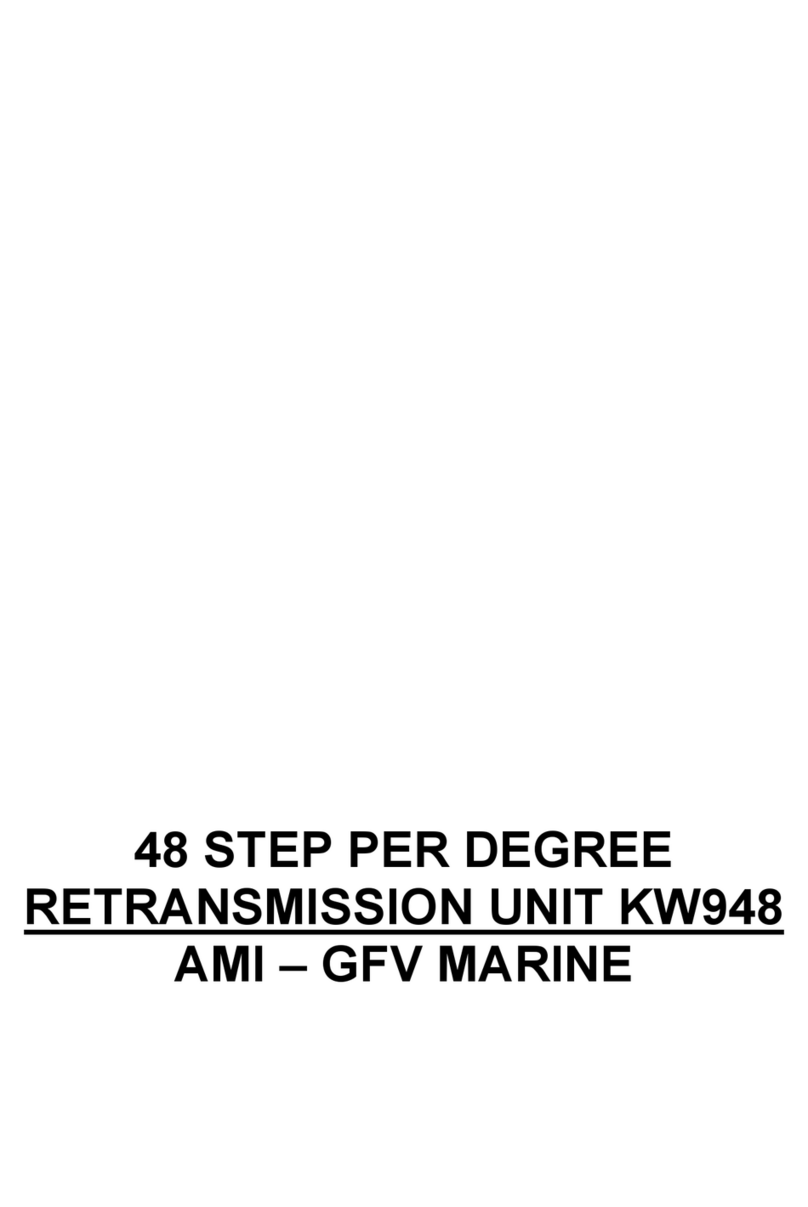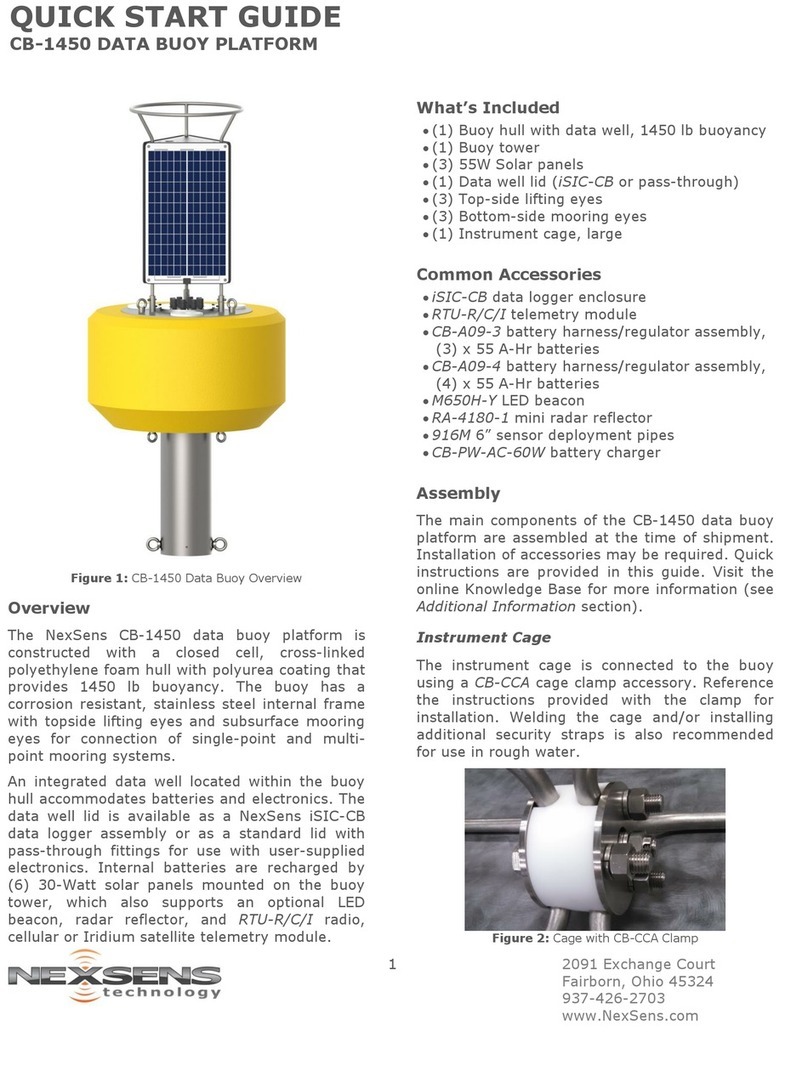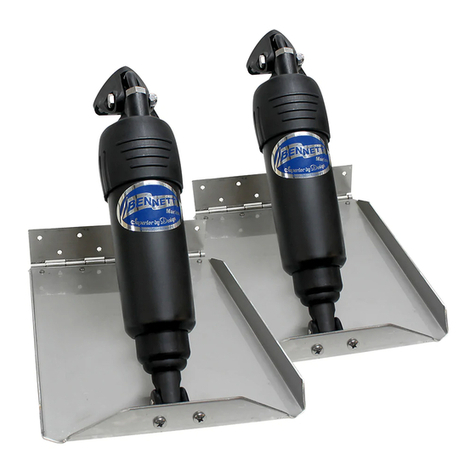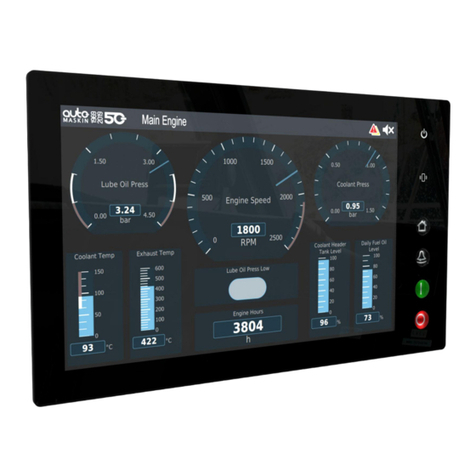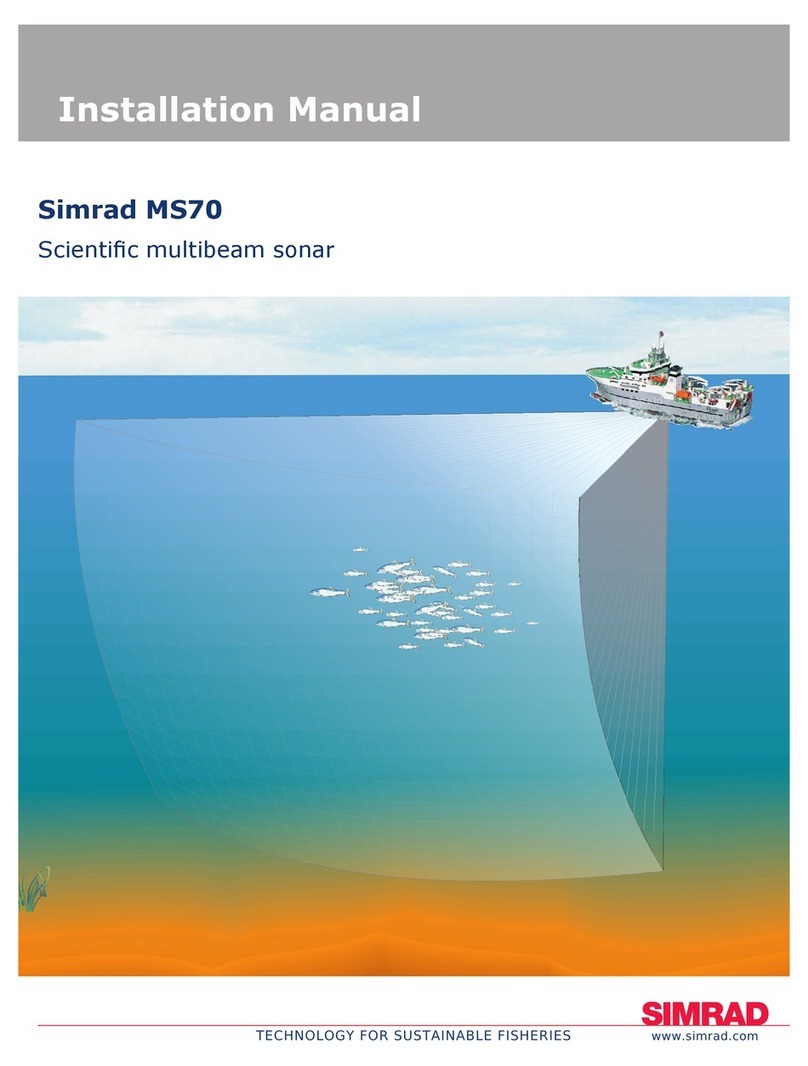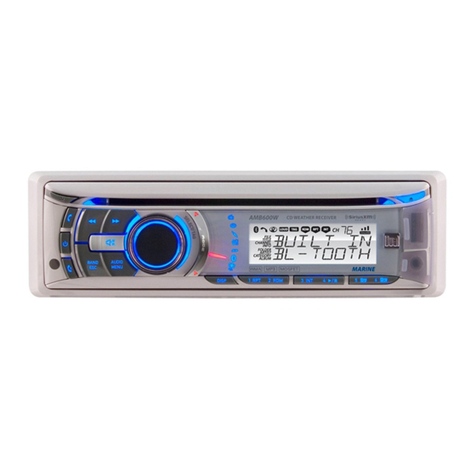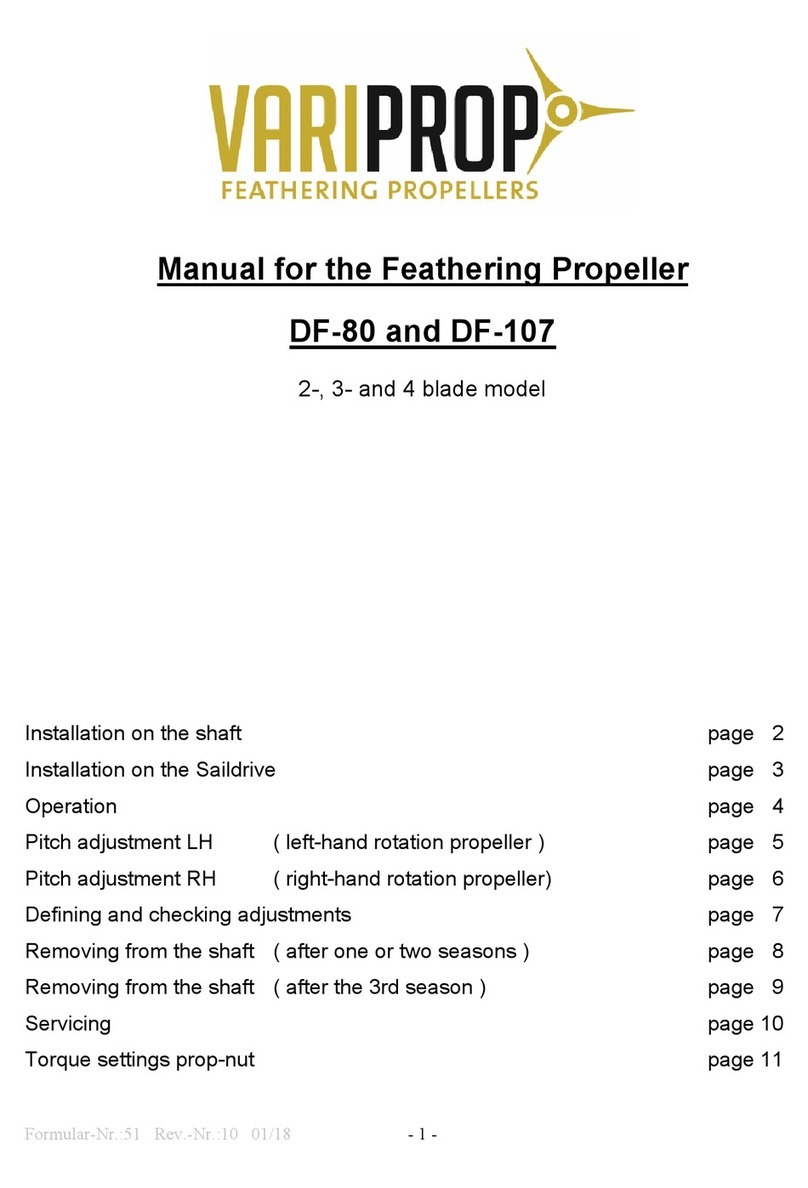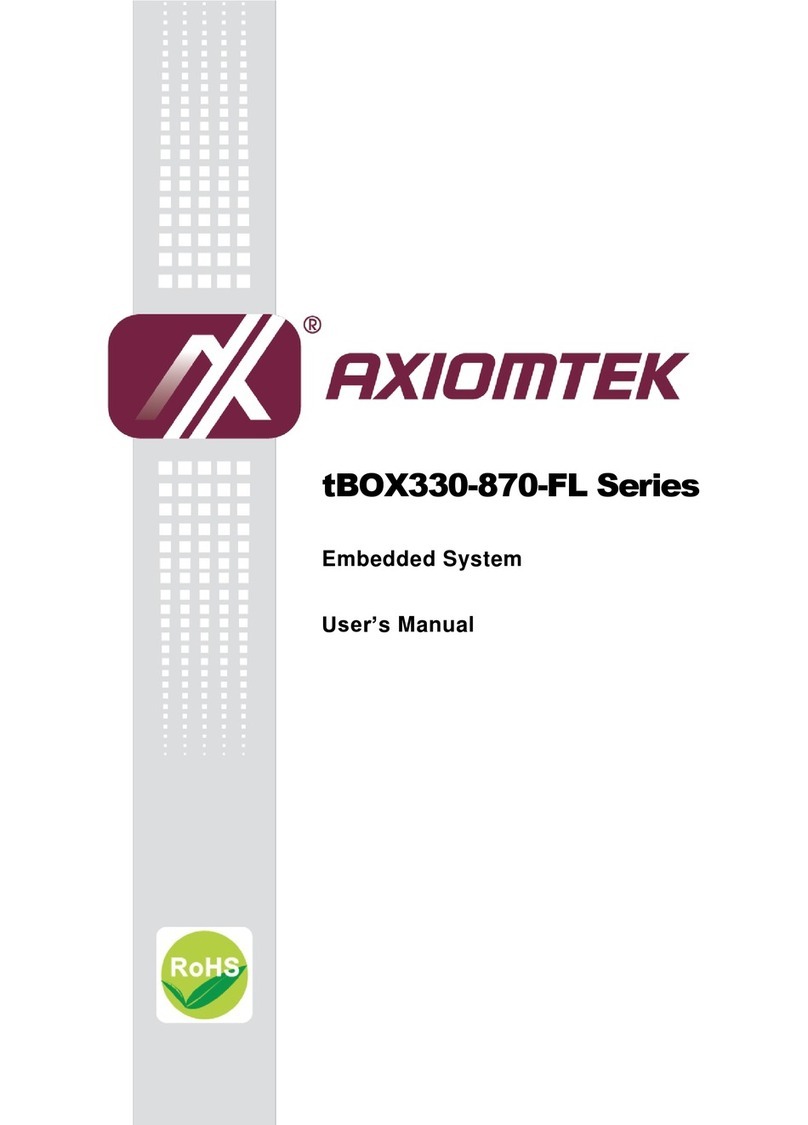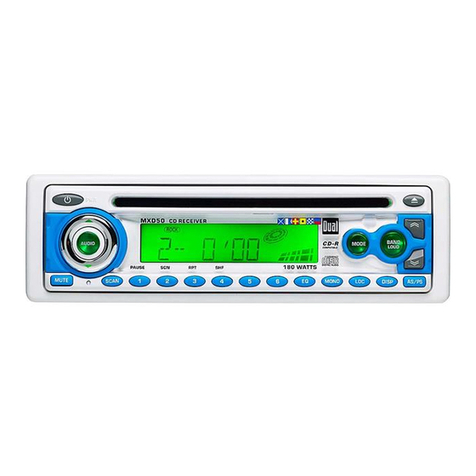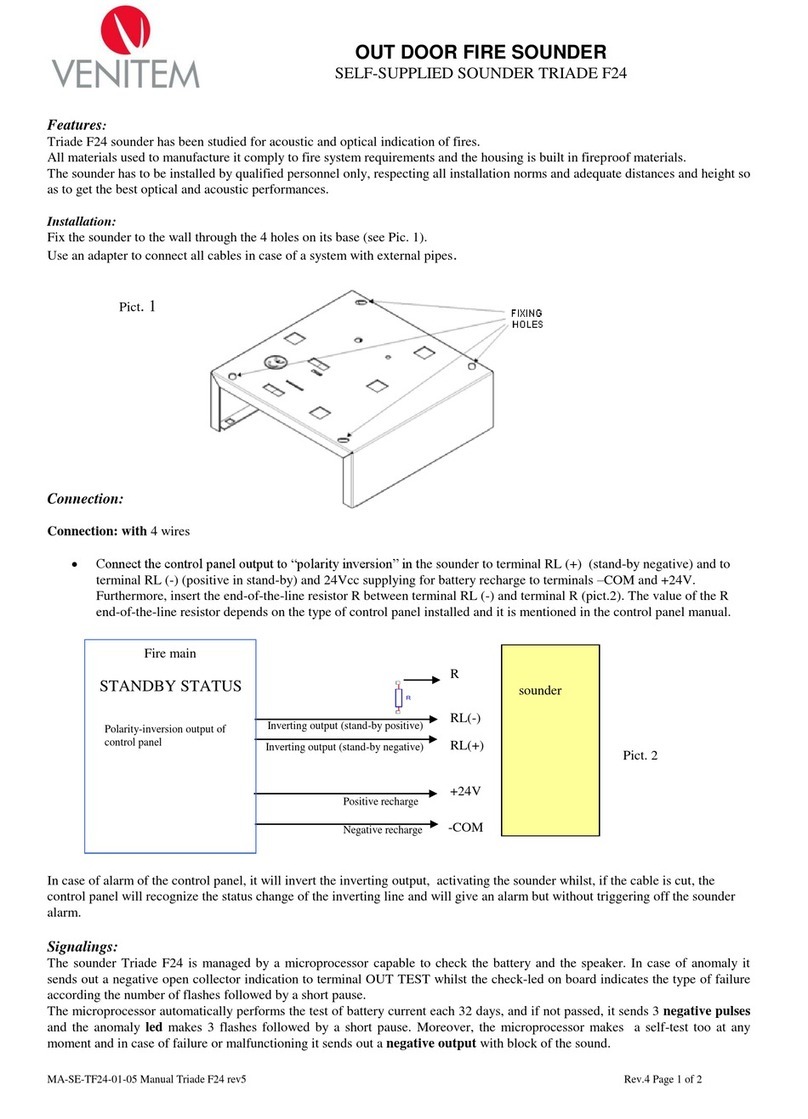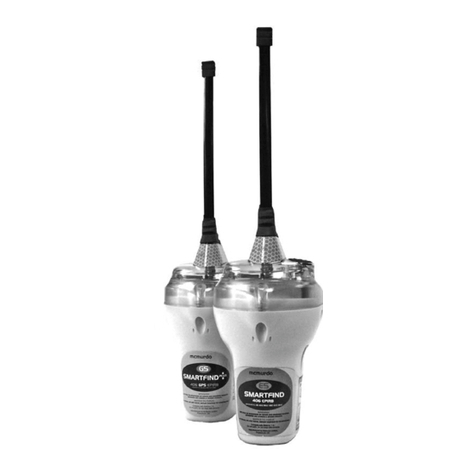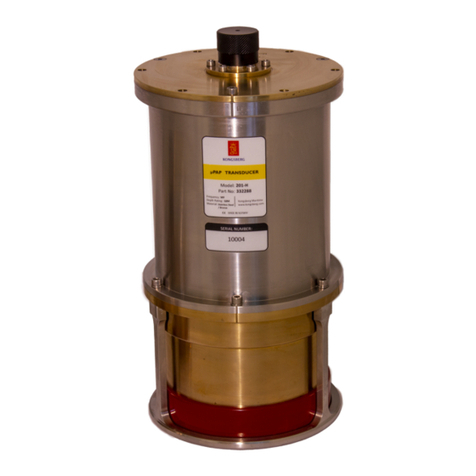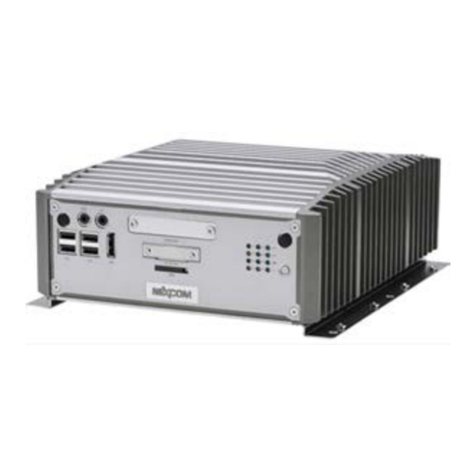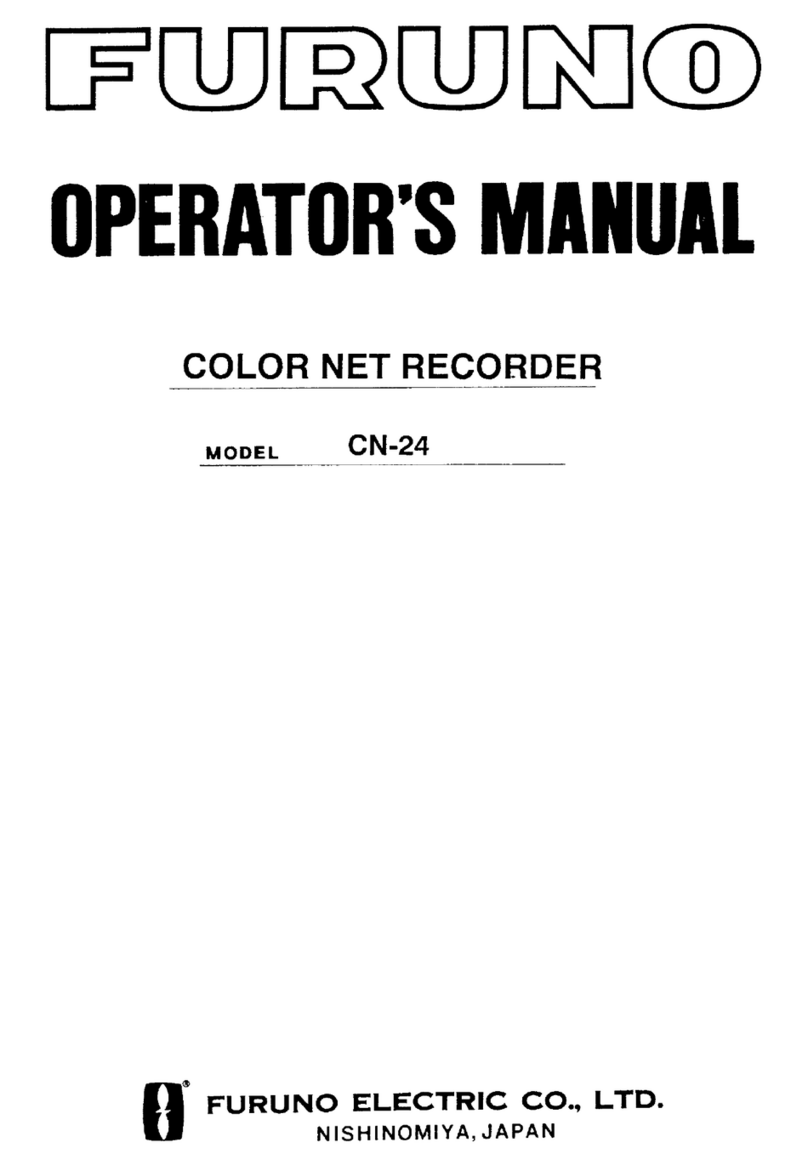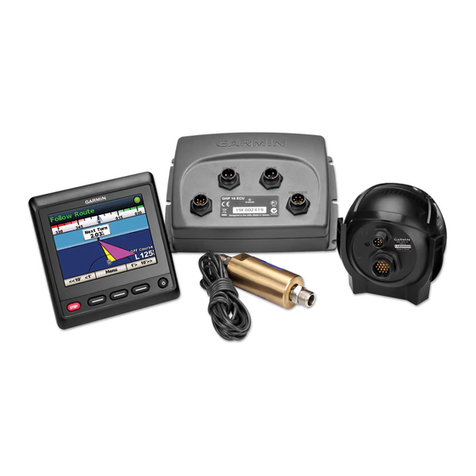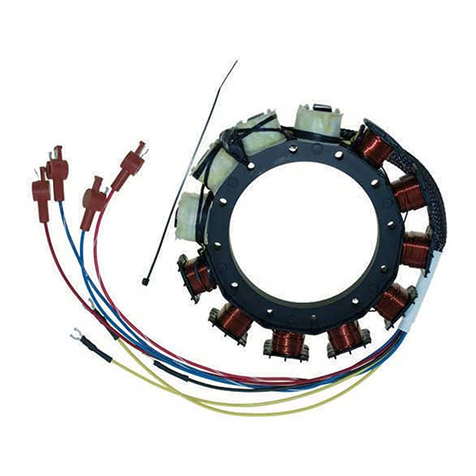ADITEL KW910-X2 User manual

FIRST DRAFT
DUAL RESOLVER TO DIGITAL
INTERFACE KW910-X2
ADITEL MARINE ELECTRONICS

DUAL RESOLVER TO DIGITAL INTERFACE
KW910-X2 WITH 8-PORT DATA OUTPUT
TECHNICAL MANUAL
1. Contents page
2. Data sheet. Check for latest
spec published on the web.
3. Introduction and installation
guide
4. Checking operation in service
5. Technical description
6. Test methods
7. Layout and schematics
SALES AND SUPPORT
LANDWATER MARINE
DESIGN AND MANUFACTURE
ADITEL MARINE ELECTRONICS
Cefn Laboratories
Abergavenny
UK
Tel 44 (0) 1873 840405. Fax 44 (0) 1873 840106
Email af-aditel @ btinternet.com Web site www.aditel.org.uk
Technical manual update 20/02/2005 by the designer, Andrew Fairgrieve

DUAL RESOLVER TO DIGITAL INTERFACE
KW910-X2 WITH 8-PORT DATA OUTPUT
The interface converts coarse and fine resolver
transmission to NMEA 0183 or IEC 61162 data.
Applications...
• Gyro compass
• Heading displays.
• Data passed from other instruments, e.g. log.
• Radar, ECDIS, VDR interfacing
The interface is a precision device, and does not require
alignment. The interface can convert gyro ratios from 1:1
to 360:1. DIP switches select ratio and small correction
value.
The KW910-X2 is based on previous highly successful
interfaces, made since 1988.
SPECIFICATION
INPUTS 1 & 2: Resolver 50 to 550 Hz. Reference 4 to 220v. Phases 10 to 90 volts.
Plug-in scaling resistors 12K to 270K ohm per phase. (R = 3xV K) 22K reference.
Conversion of coarse & fine inputs 14 bits, Conversion rate 20 Hz.
Fine ratios 9:1, 10:1, 30:1, 36:1, 90:1, 180:1, 360:1 are available to order. At the moment
only the 30:1 fine ratio is programmed in.
DATA INPUT: NMEA 0183 port. Data input here is passed through to the output.
This allows the combining of data from other instruments. Only small amounts may be
passed because it will slow the output rate of heading.
OUTPUT: NMEA 0183, RS422, RS232 compatible.
Data NMEA 0183 $HEHDT, xxx.x,T * hh cr lf. 1 per second.
$PADI sentences give coarse, fine & final angle. Update rate 20 Hz.
Final angle is 14 bits, (0.02 degree) derived from coarse and fine values.
8-pole DIP switch for final angle correction +/- .02 to +/- 2.7 degrees.
POWER & DATA DISTRIBUTION: The 8-port
distribution uses a 2nd PCB. Eight 5-way
terminal blocks. (A, B, ground, +24v, 0v.)
POWER: 20 to 32 v DC at 0.1 amps.
ENCLOSURE: Grey/brown standard enclosure with
door 500 x 400 x 150mm
FEATURES: Undrilled gland plate for compression
glands. Lift-off terminal blocks.
LEDs on data in and out plus bicolour
status LEDs.
REVISED: 22/02/2005 by Andrew Fairgrieve.
ADITEL, Cefn Laboratories, Abergavenny, UK
Tel 44 (0) 1873 840405 Fax 44 (0) 1873 840106
Email af-aditel@btinternet.com Web site www.aditel.org.uk

INTRODUCTION
The purpose of the interface is to convert gyro compass
transmission to digital signals for delivery to heading displays on
the ship.
The interface consists of two parts in the one enclosure
1. Dual resolver to digital converter KW910-X2
a. Input coarse heading resolver voltages at 1:1
ratio
b. Input fine heading resolver voltages at 30:1 ratio
c. Additionally input heading data from the log
d. Output NMEA 0183 heading data
2. Power and data distribution interface
a. Input AC mains 115/230v 50/60 Hz.
b. Output from 8 connector blocks
i. 24v DC nominal voltage for display
instruments
ii. NMEA 0183 data signals
c. Status display LEDs for the gyro
BACKGROUND NOTES ON RESOLVER INTERFACING
The gyro’s resolver output should be tested for voltage to make sure that its orientation and alignment is correct. It is
easy to test the resolvers’ output if the gyro can be turned. The fine-ratio 30:1 resolver will produce zero volts at 6 degree
intervals. The zeros of the 1:1 resolver must occur at the same zero positions as the 30:1 resolver.
You should aim to have….
• Fine ratio resolver as exact as possible, but within 1 degree.
• 1:1 ratio resolver within 3 degrees.
000.0 090.0 180.0 270.0
S1-S3 0 volts Maximum 0 volts Maximum
S2-S4 Maximum 0 volts Maximum 0 volts
• The KW910-X2 will convert the signals as received.
• The fine ratio resolver is used to indicate the exact heading within one of thirty 12 degree sectors from 000, 012,
024 etc up to 348 degrees.
• The 1:1 resolver indicates the sector in which the heading lies. The KW910-X2 assumes the heading derived
from the sector is within 6 degrees of the 1:1 angle.
• You may need to change the phase of the reference, just swap the wires round, to make the output rotate in the
right direction, or even swap the S1-S3 S2-S4 pairs in the final event.
INSTALLATION
The enclosure mounts on a bulkhead. The door can be fitted on either side. It is usually helpful to remove the door and
the inner chassis plate during installation. The enclosure must be grounded.
This manual does not give a wiring diagram for any particular gyro or ship. That has to be done by the installing
company.
SELECTION OF RESOLVER SIGNAL SCALING RESISTORS
These resistors are standard network resistors, 8 pins, 4 isolated resistors. They plug in to sockets on the PCB. Make the
total +/- 10 percent of the calculated value. There are some examples below. These resistors are already fitted, and a
small selection of spare resistors may be supplied. There are layout diagrams at the back of the manual.
1:1 input. R1 + R2 +R3 +R4 = (Maximum resolver signal voltage) x 3 Kilohms
30:1 input. R5 + R6 +R7 +R8 = (Maximum resolver signal voltage) x 3 Kilohms
1:1 resolver signals 12 volts line to line. R1 + R2 + R3 + R4 = 36K ohms.
Use 22K + 10K + 3K3 + 1K = 36.3K.
30:1 resolver signals 6 volts line to line. R2 + R3 + R4 + R5 = 18K ohms
Use 10K + 4K7 + 3K3 + 47R = 18,047 ohms

SELECTION OF RESOLVER REFERENCE INPUT RESISTOR
This is not at all critical. The resistor should allow between approximately 1 and 5 mA to pass.
1:1 input. R9 = V/1 to V/5 K ohms
30:1 input. R10 = V/1 to V/5 K ohms
Example: For 36 volt reference a resistor ranging from 8K2 to 33K would be OK. Power rating = 2 x ( V x V ) / R. For this
example 22K 0.25 watts is used and is already fitted in the interface.
FINE RATIO SETTING SWITCH SW1
SW1 30:1 1:1
1 ON OFF
2 ON OFF
3 ON OFF
4 OFF OFF
ANGLE CORRECTION SWITCHES
Set SW2 and SW3 all OFF until the installation is finalised. They will allow a fine adjustment to be made to compensate
for misalignment of the fine resolver.
CABLE CONNECTIONS
Cable screens should be grounded. Data cable should be screened twisted pair to comply with NMEA 0183 rules. Other
cables will probably work well.
KW910X2 SK4 1 2 3
POWER INPUT +24v Ground 0 volts
KW910X2 SK1 1 2 3 4 5 6
COARSE RESOLVER 1:1 RATIO R1 R2 S1 S2 S3 S4
KW910X2 SK2 1 2 3 4 5 6
FINE RESOLVER 30:1 RATIO R1 R2 S1 S2 S3 S4
KW910X2 SK3 1 2 3 4 5 6
DATA IN AND OUT IN - A IN - B GND or
SCREEN
OUT - A OUT – 0 OUT - B
POWER & DATA DISTRIBUTION
SK13
1 2
From KW910-X2 DATA IN A DATA IN B
POWER & DATA DISTRIBUTION 1 2 3 4 5
TO REPEATERS +24volts 0 volts Data A Data 0v Data B
STATUS LEDS
SK14
1 & 2 3 & 4 5 & 6
Contact close Available Simulation Fault
AC POWER SK9 1 2 3
115/230v Line Ground Line
SET SW2 BEFORE SWITCHING ON!

TESTING THE RESOLVER INTERFACE
• SWITCH ON:
o Data LEDS LD7 and LD 4 will flash at least once per second
o Status LED LD5 will be green if it detects good 1:1 ratio resolver signals.
If it detects bad signals LD5 will flash red and green.
LD1 should be on, indicating reference voltage detected.
o Status LED LD6 will be green if it detects good 30:1 ratio resolver signals.
If it detects bad signals LD6 will flash red and green.
LD1 should be on, indicating reference voltage detected.
o LD3 will flash in time with data input from the log or external device.
It is important that this is just a brief flash once per second. If excessive data is applied the
delivery of heading data will be interrupted.
• POWER & DISTRIBUTION INTERFACE
o LD2 indicates the 24v nominal power for the repeaters is on.
o LD1 shows data coming in from the KW910-X2
o LD4 is on showing the 5 volts is present for the data output drivers
o To test each individual output you can connect an LED across pins 3 to 5 of each output terminal.
o The data output will be read by the repeaters and displayed.
CHECKING RESOLVERS FOR ALIGNMENT
1. Repeaters will indicate the heading. Use a display with 2 decimal places during the tests, or use a PC to display
the raw data which contains heading to 3 decimal places.
2. Move the gyro and check that the interface follows in the same direction. Hopefully it does, and the heading is
also nearly exactly that of the gyro.
3. If not, then the resolver is not wired in the standard way. You will have to try different tests and adjustments to
make it so. Here is some guidance. You can not proceed until the data is nearly correct, and to do that logically
you will have to use a PC to display the data.
CHECKING THE DATA AND ADJUSTING PHASING
1:1 RESOLVER PROCESSOR
• Read the data at TP1.
• Alternatively read the data at SK3 and use the hex data as will be described later.
• The heading should equal that of the gyro, or be within a few degrees.
o Recalling, that you have already checked for zero volts on S1-S3 at zero degrees perhaps the phasing
is wrong.
o Try reversing a pair of wires and try again.
o You can always prove the interface by simply removing one phase and allowing a small voltage to
remain on the other phase. At this point a recognisable angle.
• Once you have proved that the 1:1 processor delivers correct heading you can proceed.
30:1 RESOLVER PROCESSOR
• Read the data at SK3 or TP2 and use the hex data as will be described later.
• Ignore the FINAL heading and check that the FINE SECTOR angle is appropriate within a few degrees. (Divide
by 30.)
o This fine sector data is in hex format in the 2nd data field of the long data sentence.
• Example 1:1 heading = 000. Fine angle = 180 = 006 sector degrees. Final heading = 006.
o Recalling, that you have already checked for zero volts on S1-S3 at zero degrees perhaps the phasing
is wrong.
o Try reversing a pair of wires and try again.
o You can always prove the interface by simply removing one phase and allowing a small voltage to
remain on the other phase. A recognisable angle results.

• Once you have proved that the 30:1 processor delivers correct heading you can proceed, the system must be
OK.
FINE ADJUSTMENT
Final heading can be adjusted by setting a number of DIP switches to ON to give a total correction value of +/- 2.79
degrees.
SWITCH CORRECTION VALUE
SW3 1 0.022
2 0.044
3 0.088
4 0.176
SW2 1 0.352
2 0.703
3 1.406
4 OFF = ADD correction value ON = SUBTRACT correction
CHECKING AGAINST THE GYRO
The KW910-X2 is a very high precision device and final heading will be as accurate as the resolver outputs. Make a test
at many headings to prove the system. As always, never depend entirely on an electronic aid to navigation.
TECHNICAL INFORMATION. DATA OUTPUT.
The data output is especially encoded in order to allow a 20 Hz update rate. Proprietary data sentences are used.
1. Long message $PADIL, aa, bbbb, cc, dddd, eeeeee, *HH cr lf
a. Example, 41. 4/7 = ratio code. 0/1 = status
b. Example, 3B94. Hex value of resolver angle. 0000 to 3FFF.
i. FFFF = fault, unable to compute angle.
c. Example, 71. 7 = 1:1 ratio. 0/1 = status of the 1:1 processor.
d. Example, 3FDA . Hex value of the 1:1 resolver.
e. Example, 359165. Final computed heading angle in degrees x 1000.
f. *HH is the checksum
g. This message is given once per second. It allows the repeaters to display the performance of the interface.
2. Short message $PADIa, bbbbbb, *HH cr lf
a. . a = 0 or 1 giving status of the final computation.
b. Final heading angle
c. This message is given whenever heading changes, the fastest update.
3. Correction applied message $PADIC, aaaa, bbbb, *HH cr lf
a. The binary correction set by the switches, in hex.
b. Offset value which may be applied in EPROM
c. This message is at a 12.8 second rate
4. HDT message $HEHDT, aaa.aa, T * HH cr lf
a. . a is heading in degrees
b. This message is given at a 1 second rate.
5. Passed-through message from external device. This is expected at 1 per second.
RESOLVER FORMULA
With respect to the reference
S1-S3 = - Vmax * sin angle
S2-S4 = Vmax * cos angle
BINARY HEXADECIMAL CODING OF THE ANGLE IN 14 BITS
Angle 000 090 180 270 MAX BEFORE ROLL-OVER
0000 1000 2000 3000 3FFF
TECHNICAL DESCRIPTION
The KW910-X2 has two microprocessor modules to compute the resolver angles. They are encapsulated to stop illegal
copying. Unfortunately a Chinese company Elekon have copied one of my products, the KW950E, using all the EPROM
programming code through years of work, and I do not intend it to happen again.
The two modules are identical, and plug in. Module 2 can be used switched to the 1:1 mode.

The plug-in scaling resistors provide a simple method of coping with different voltage input. The resistance is not critical.
The data output from the power and distribution interface have 47 ohm resistors in each output line. They can not burn
out even if short circuited, but they will burn out, and the output chips be blown if a high voltage is applied to the output
lines. This is mentioned because there have been occasions when high voltage has been applied to data outputs, and
the warranty does not cover this. Even if it happens it’s easy to fix because the output chips SN74HCT240N and the 47R
1/8th watt resistors are easily available worldwide.
The data output from module 1 is prefaced with “#” to indicate the data is to be used by module 2 rather than being
passed on. The data output from module 2 does not send that character, unless it is on the 1:1 mode. The output data is
carefully contrived to allow a fast update with full information on both processors. If a user needs to get a faster output of
$HEHDT that is available from the KW991 or KW950E repeaters.
Andrew Fairgrieve


Table of contents
Other ADITEL Marine Equipment manuals
